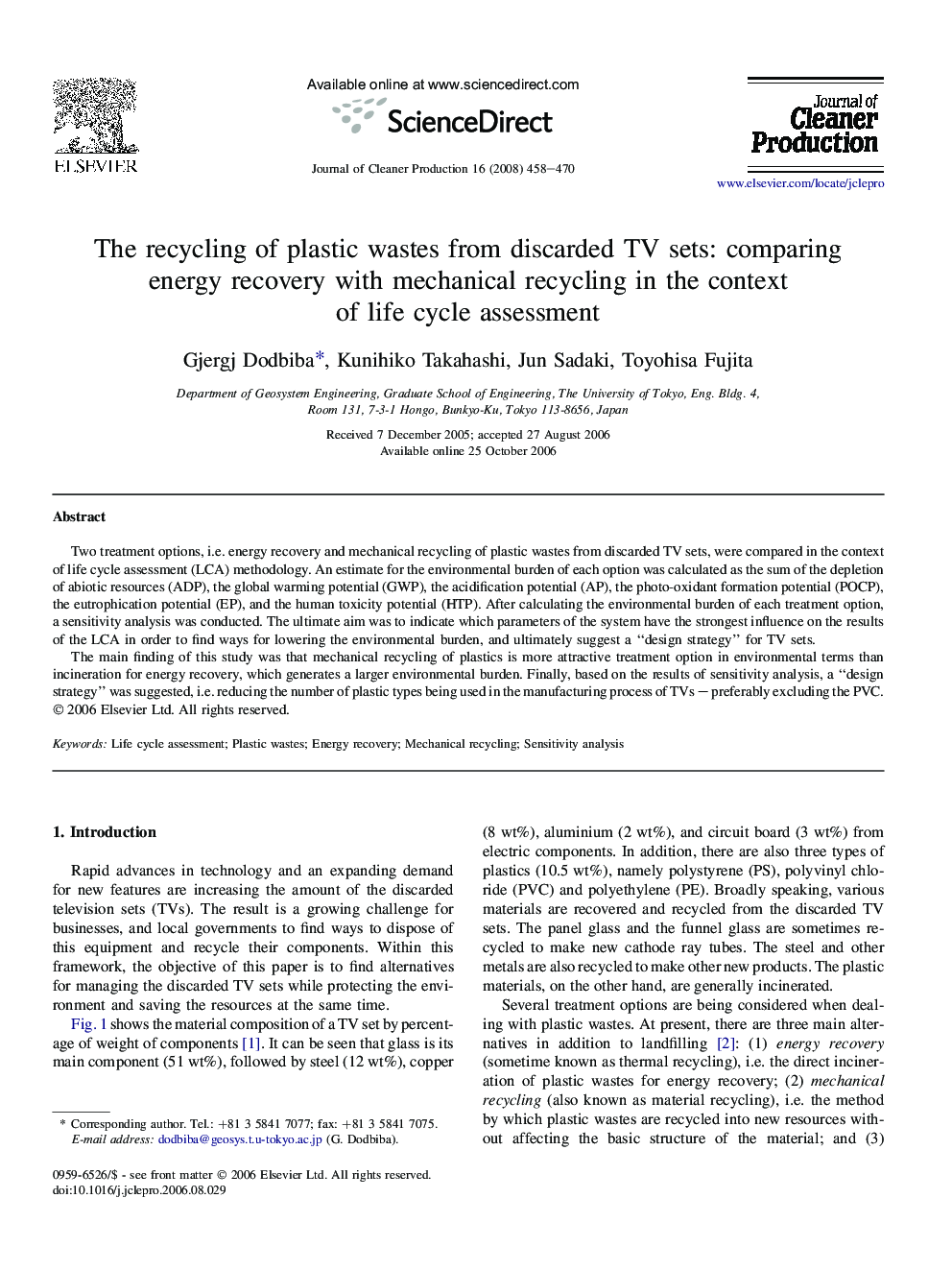| Article ID | Journal | Published Year | Pages | File Type |
|---|---|---|---|---|
| 1747172 | Journal of Cleaner Production | 2008 | 13 Pages |
Two treatment options, i.e. energy recovery and mechanical recycling of plastic wastes from discarded TV sets, were compared in the context of life cycle assessment (LCA) methodology. An estimate for the environmental burden of each option was calculated as the sum of the depletion of abiotic resources (ADP), the global warming potential (GWP), the acidification potential (AP), the photo-oxidant formation potential (POCP), the eutrophication potential (EP), and the human toxicity potential (HTP). After calculating the environmental burden of each treatment option, a sensitivity analysis was conducted. The ultimate aim was to indicate which parameters of the system have the strongest influence on the results of the LCA in order to find ways for lowering the environmental burden, and ultimately suggest a “design strategy” for TV sets.The main finding of this study was that mechanical recycling of plastics is more attractive treatment option in environmental terms than incineration for energy recovery, which generates a larger environmental burden. Finally, based on the results of sensitivity analysis, a “design strategy” was suggested, i.e. reducing the number of plastic types being used in the manufacturing process of TVs – preferably excluding the PVC.
